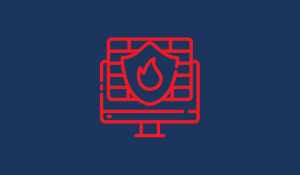What is SIEM and Why Your Business Needs It?
Today more than ever, more and more companies and public offices require powerful security measures to effectively counter the numerous cyber...
4 min read
 DriveLock
Oct 30, 2024 10:30:00 AM
DriveLock
Oct 30, 2024 10:30:00 AM

Cybersecurity is a constantly evolving field in which new threats and security solutions are constantly emerging. One of the most effective technologies used in this field is the so-called sandbox. In this article, you will learn what a sandbox is, how it works and why it is so crucial for protecting networks and data.
| CONTENT |
In cyber security, the term sandboxrefers to an isolated environment in which suspicious files, programs or applications are executed without the risk of them affecting the actual system or network. A sandbox is designed to allow potentially malicious activity to be observed in a safe and controlled manner without the risk of these threats spreading.
A sandbox simulates a complete computer environment, including all the resources that a program normally requires. Once a file or application is loaded into the sandbox, it can be monitored in real time. The IT security analysts analyze the program's behavior and check it for malicious activities such as creating network connections, changing files or installing malware.
If the program shows harmful intentions, the sandbox can abort the process and isolate the file without endangering the main system. This preventive method makes it possible to detect threats before they cause damage.
1. Creation of an isolated environment: A sandbox is an isolated, controlled environment in which suspicious files or programs are executed separately from the main system to prevent potential threats from spreading.
2. Behavioural analysis: Once files and programs are in the sandbox, they are monitored in real time for unusual or malicious behaviour, such as unauthorized network connections, file changes or abnormal memory usage.
3. Detection of suspicious activity: If the sandbox detects activity consistent with malware, the file or program is flagged as a threat so IT teams can take appropriate action.
4. No impact on main systems: The sandbox environment protects the main system from potential damage by containing and stopping threats within the virtual space.
5. Quarantine and reporting: detected threats are quarantined in the sandbox and a report is generated with detailed information about the malware's behavior to help with future security analysis.
6. Compatibility testing: Developers and security teams use sandboxes to test software and applications for security vulnerabilities without compromising system integrity.
In cybersecurity, sandboxes provide a valuable way to safely test potentially dangerous software without compromising the network. However, like any technology, sandboxing comes with pros and cons. While it provides an effective way to detect and isolate threats early, there are also challenges such as high resource requirements and the possibility that sophisticated malware can bypass a sandbox.
A closer look at the strengths and weaknesses of this technology helps to better understand its usefulness in cybersecurity strategy.
Thanks to the sandbox, IT specialists and developers can test applications and programmes in a secure environment without the risk of malware infecting the system.
Sandboxing can detect malware that cleverly disguises itself and tries to circumvent security measures.
As the sandbox is isolated, threats cannot gain direct access to sensitive data and systems.
1. High resource consumption: Sandbox technology requires considerable computing resources, as each file or application is analysed in an isolated environment. These analysis methods require storage space, processing power and additional network resources, which can lead to system slowdowns, especially in large companies or with high data loads. This can be a challenge for smaller companies, as the acquisition of powerful hardware and corresponding infrastructure is costly.
2. Circumvention by intelligent malware: Some types of malware are now ‘sandbox-aware’ and recognise when they are executed in such an environment. This malware remains inactive or displays harmless behaviour to fool the sandbox. This allows it to bypass the actual analysis process and wait for the production system, where it can activate undetected and cause damage. Such evasion techniques make sandboxing alone less effective.
3. Slow analysis processes: Sandboxing is a process-intensive procedure in which each file must be thoroughly analysed, which can take a lot of time. When large amounts of data need to be analysed in real time, the delays can become critical. This can slow down the response time to threats, which can affect the efficiency of the security system, especially in times of acute cyberattacks.
4. Limited applicability for complex threats: Not every type of threat can be detected in a sandbox. Complex attacks, such as those that exploit network vulnerabilities or specific user interactions, are often difficult to simulate. This means that some threats can hide outside the sandbox and remain undetected, leaving the system vulnerable.
5. High costs for implementation and maintenance: The installation, configuration and ongoing maintenance of sandbox technology are cost-intensive. In addition to the necessary hardware investments, there are also costs for software licences and for trained personnel to manage and analyse the sandbox. This often makes the technology a financial challenge for smaller companies or start-ups.
In the real world of cyber security, a sandbox serves as a secure test environment to analyze potentially dangerous files and programs without risk to the main system. For example, a company regularly receives emails with attachments and downloads that could contain malware. Before these files are forwarded to the network, the sandbox executes them in an isolated environment that is completely separated from the rest of the system.
During execution, the sandbox closely monitors whether the file exhibits any malicious activity, such as establishing network connections or modifying files. If suspicious actions occur, the threat is isolated and a detailed report is sent to the security team, who can then take appropriate action. Through this secure testing process, the sandbox enables companies to effectively defend themselves against threats and continuously improve their security strategies.
More and more companies are turning to sandbox technologies to protect themselves from complex cyber attacks. At a time when cybercrime is becoming increasingly sophisticated, it is important to have tools that can proactively protect and respond quickly to threats.
In cyber security, sandboxing is a method of analyzing suspicious files and programs in an isolated environment without compromising the main system. A sandbox simulates an isolated environment in which the activities of the potential malicious program can be monitored.
If unusual behaviour, such as unwanted network connections or file manipulation, is detected, the threat is immediately identified and blocked. This technology protects companies from malware and allows suspicious content to be tested safely. Despite some disadvantages, such as high resource consumption and circumvention possibilities through sophisticated malware, the sandbox remains an important building block in any cyber security strategy.

Today more than ever, more and more companies and public offices require powerful security measures to effectively counter the numerous cyber...

The threat of malware looms large. From viruses and worms to ransomware and spyware, malicious software poses a significant risk to individuals,...

Are you ready to fortify your digital defenses and safeguard your network from cyberattacks? Look no further than the network firewall. A formidable...